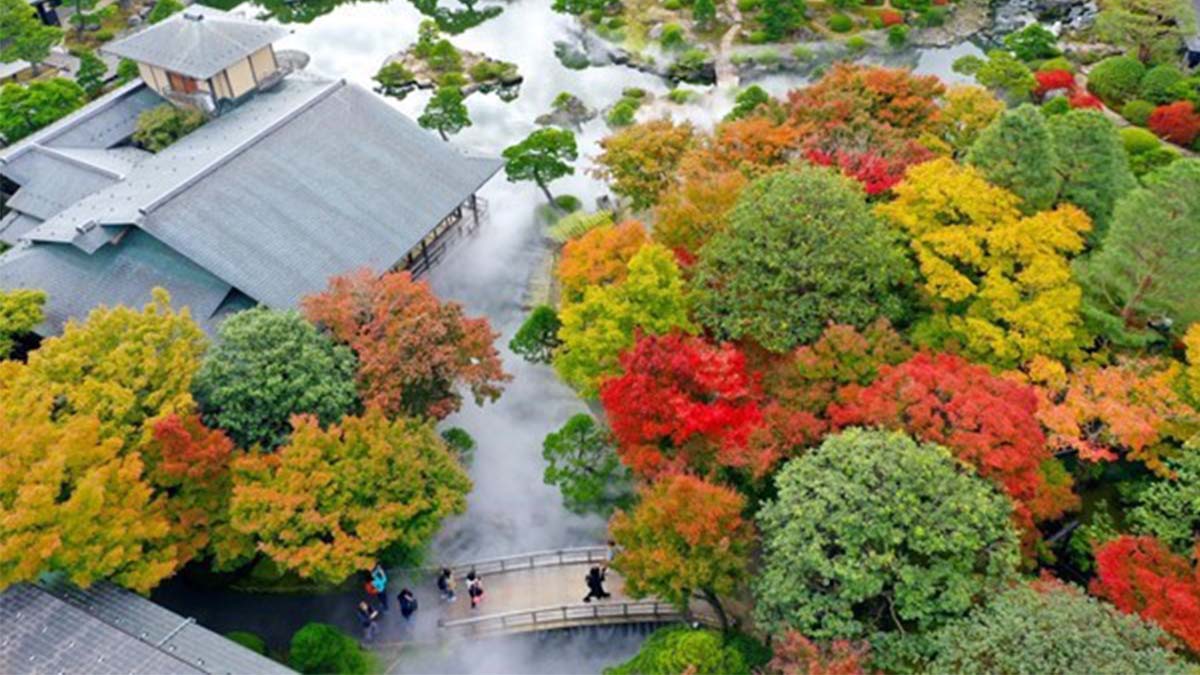Japan's hidden gems: Shimane & Tottori
- 9/10/2024
- 435 Day

Discover
mythology, mountains and rich heritage in Shimane and Tottori, two of Japan's
lesser-explored prefectures.
Located on the northern coast of southern Honshu,
between the Sea of Japan and the Chūgoku mountain range, Shimane and Tottori
are two of Japan's least populated prefectures. Off the main tourist routes,
this region is full of natural and cultural wonders that reward travelers who
make the journey to get to know it. Mountains and sand dunes, seascapes and
historic temples, flower-filled gardens and friendly people are just some of
the reasons that make a trip to this little-known region, steeped in Japanese
mythology, so enjoyable. Here are some highlights where a warm and friendly
welcome is guaranteed.
Discover
Japan's origin story and creation legends at Izumo Grand Shrine
Shimane's important role in Japanese history cannot be
overstated. The prefecture's Izumo Taisha Grand Shrine is one of the country's
most prominent religious and cultural sites and is also considered one of the
oldest. Although no one can say for sure when it was first established, the
temple's roots go back a long way, and Japan's cultural origin story begins in
what was once known as the Land of the Gods. This is where the first cycle of
Japanese creation myths took place, a place visited by the ancient gods who are
said to have created the country we know today as Japan.
The architecture of Izumo Taisha Grand Shrine is
imposing yet delicate. The 24-meter-high main hall, or honden, features
expansive roofs, intricately carved wooden details and the largest shimenawa
sacred straw rope, weighing kagura-den five tons. The temple hosts a number of
cultural festivals throughout the year, most notably the kamiarizuki festival
in the tenth month of the lunar calendar. The dates vary each year, but usually
fall in October or November. The festival celebrates the gathering of the
Shinto gods, who are said to gather annually at the shrine to decide the fate
of their subjects. Timing your visit to coincide with the festival is an
engaging way to see the cultural rituals, customs and costumes that are central
to Shinto beliefs, and is an unforgettable - and completely unique - spectacle.
Dazzling
colors, seasonal flowers and a relaxing day at Yuushien Garden
Conveniently located on Daikon Island, between Matsue
City and Yonago Airport and connected to land by bridges, Yuushien Garden makes
for a calming and colorful day out. Spread over 40,000 square meters and
carefully landscaped, it takes on different moods at different times of the
year, evoking a scene from traditional Japanese ukiyoe art with its ponds, pine
trees and bright red wooden bridge. Visitors flock to the island in spring for
the blossoming flowers of peonies, rhododendrons and irises, and in summer for
the vibrant displays of hydrangeas and water lilies. There are fewer flowers in
autumn and winter, but the camellias and winter peonies are not to be missed.
The garden's foliage takes on warm colors in autumn, and in winter the delicate
plants are given straw covers that look like little hats protecting them from
the snow.
The island is also famous for its production of Korean
ginseng, a medicinal plant believed to boost energy and have many health
benefits. You can try it in the form of tea, ice cream and even tempura at the
on-site restaurants and cafes. Come lunchtime, you'll also have the opportunity
to dive into the flavors of the region, such as Izumo soba made with locally
grown buckwheat flour, eel cooked on lava rocks, and seasonal fish, seafood and
vegetables.
Everything
that shines in Iwami Ginzan is silver
As its name suggests, Iwami Ginzan, meaning “Iwami's
Silver Mountain”, was once one of the largest silver mines in the world,
producing a third of the global supply in the 16th and 17th centuries. Although
mining is no longer practiced today, the area remains an intriguing stop on any
trip to this part of the country. A UNESCO World Heritage Site, Iwami Ginzan
spreads across lush mountains and two coastal towns that once served as
shipping points for the silver industry.
Those interested in learning more about Iwami Ginzan's
silver wealth should head to the World Heritage Center, where the history,
science and engineering achievements used in extracting the precious metal from
the earth are told, as well as the lives of the people behind the region's
wealth. This is also a place where you can orient yourself before heading out
and exploring the area. Shuttle buses take visitors to Omori, a photogenic little
town that was once the administrative center of the region, lined with historic
wooden houses and shops, some of which have been converted into museums giving
an insight into life here in the past. From Omori, picturesque paths wind
through forested areas and up the mountain slopes to numerous small temples,
such as Gohyaku Rakan, where small caves house 500 stone statues of Buddha's
disciples, each with a different face and expression.
Kaike
Shogetsu: A quiet ryokan in Tottori Prefecture
Located in the quiet Kaike Onsen area of Tottori
Prefecture, Kaike Shogetsu is an exclusive ryokan known for its traditional
Japanese hospitality and serene atmosphere. This intimate ryokan features 19
rooms, some of which have been recently renovated, offering guests a
personalized and peaceful experience. The exclusive rooms have spectacular
ocean views, adding a picturesque element to the calming environment.
Kaike Shogetsu's architecture beautifully combines
traditional Japanese elements with modern comforts. Inside, tatami floors,
shoji curtains and large windows support a sense of tranquility, connecting
guests with the surrounding natural beauty.
The culinary delights at Shogetsu offer the best of
Tottori's local produce and seafood. From November through the winter season,
guests can enjoy exquisite dishes made with fresh Matsuba crabs, a seasonal
delicacy from the Sea of Japan. The ryokan also offers dishes featuring locally
sourced Tottori Wagyu beef, known for its exceptional quality and flavor.
The onsen at Kaike Shogetsu is fed by the saltwater
hot springs of Kaike Onsen, known for their relaxing properties and health
benefits. These therapeutic waters ensure that each bathing experience not only
rejuvenates the body but also revitalizes the spirit.
Kaike Shogetsu is more than a place; it is a sanctuary
where guests can connect with the peaceful pace of life in Tottori. Whether
relaxing in the therapeutic waters of the onsen, savoring gourmet cuisine or
unwinding in ocean-view rooms, every element is designed to deliver a tranquil
and enriching experience.








